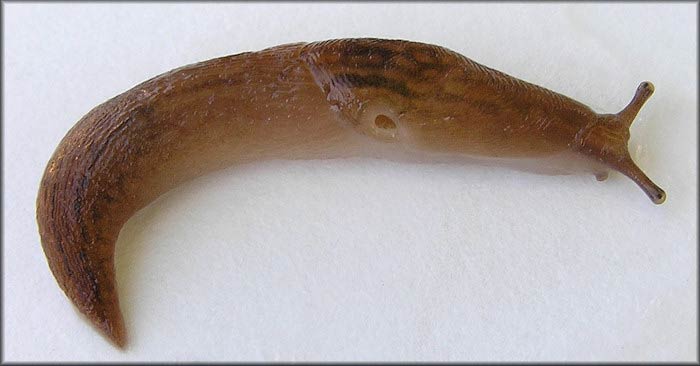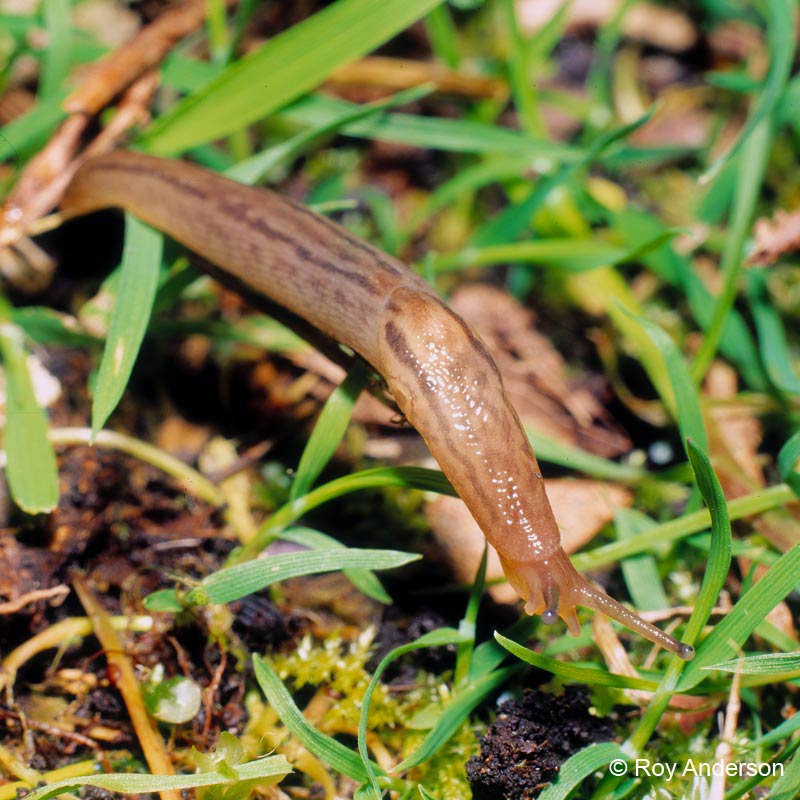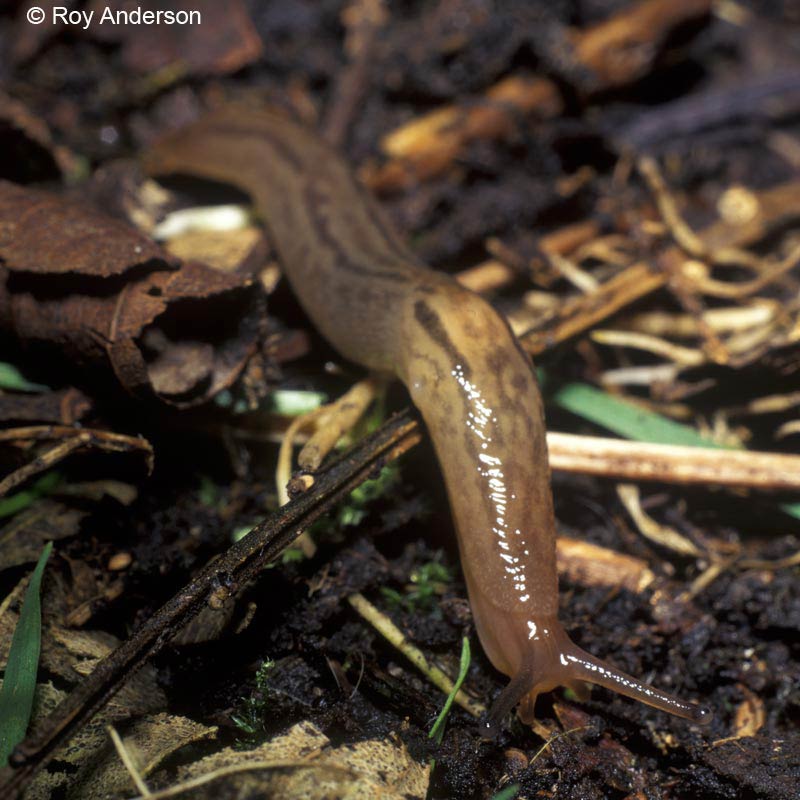Lehmannia valentiana
|
|
|
|
|
|
|
|
|
|
|
|
|
(Photo:© R.J. McDonnell, University of California, Riverside) |
|
(Photo:© R.J. McDonnell, University of California, Riverside) |
|
Lehmannia marginata: genitalia. (Photo: © R. Forsyth, modified by K. Weigel, University of Florida) |
Family
Limacidae
Species
Lehmannia valentiana (Ferussac, 1821)
Common name
Three-band gardenslug, Greenhouse slug
Description
Mature adults of this slugSlug:
A snail that either does not possess a shell or has one that is very reduced (no definite coiling) or internal.
can attain a length of about 50-75 mm. The three-band gardenslug appears translucentTranslucent:
Allows light to pass through but prevents the ability to see distinct objects.
and has a yellow-grey or yellow-violet color. The slugSlug:
A snail that either does not possess a shell or has one that is very reduced (no definite coiling) or internal.
generally has a two pairs of dark bands on either side of the body’s midline. The lower pair of bands may be faint in some individuals. The sole of the slugSlug:
A snail that either does not possess a shell or has one that is very reduced (no definite coiling) or internal.
is pale grey in color. The keelKeel:
Also known as the carina. This is a longitudinal ridge that runs dorsally along the apex of the tail of the animal.
of this slugSlug:
A snail that either does not possess a shell or has one that is very reduced (no definite coiling) or internal.
is short and does not extend out to the mantleMantle:
A fleshy, membranous covering of the anterior portion of the body of a mollusc. It secretes the materials that form the shell.
. The mantleMantle:
A fleshy, membranous covering of the anterior portion of the body of a mollusc. It secretes the materials that form the shell.
has multiple ridges with what appears to be a fingerprint-like pattern. The pneumostomePneumostome:
This is the breathing hole on the right side of the mantle of molluscs. This allows air to pass through to the lung for gas exchange.(See also breathing pore).
(breathing pore) is located on the right, in the posteriorPosterior:
Directional term: the rear or tail end of an animal.
third of the mantleMantle:
A fleshy, membranous covering of the anterior portion of the body of a mollusc. It secretes the materials that form the shell.
. The non-sticky, colorless mucus produced by this slugSlug:
A snail that either does not possess a shell or has one that is very reduced (no definite coiling) or internal.
is very watery.
The following species can be separated by dissection and observation of their genitaliaGenitalia:
The reproductive structures of an animal. May refer to either male or female structure.
:
Lehmannia marginata: The appendix on the penis of this species tapers to a point.
L. valentiana: The appendix on the penis of this species is somewhat tubular or the apexApex:
The tip of the spire of a shell.
may appear expanded.
Native range
Iberian Peninsula
Distribution
North America
South America
Europe
Asia: Japan
Africa
Oceania
Ecology
The three-band gardenslug is nocturnalNocturnal:
Occurring or becoming active at night.
in nature and is often dispersed by human activity. This species inhabits moist habitats and generally comsumes decaying wood and living plant material and is often considered a serious pest in greenhouses. This slugSlug:
A snail that either does not possess a shell or has one that is very reduced (no definite coiling) or internal.
produces copious amounts of slime as a defense mechanism. The oval eggs produced by this species are yellow and measures 2.25 mm wide. There may be as many as 60 eggs per clutch.
Synonyms
- Limax valentianus Ferussac, 1821
- Limax valentiana Ferussac, 1822
- L. poirieri Mabille, 1883
- L. marginatus of authors, not Muller, 1774.
References
Anderson 2005; Horsak et al. 2004; Kerney et al. 1979; Roth and Sadeghian 2006; Udaka and Numata 2008








